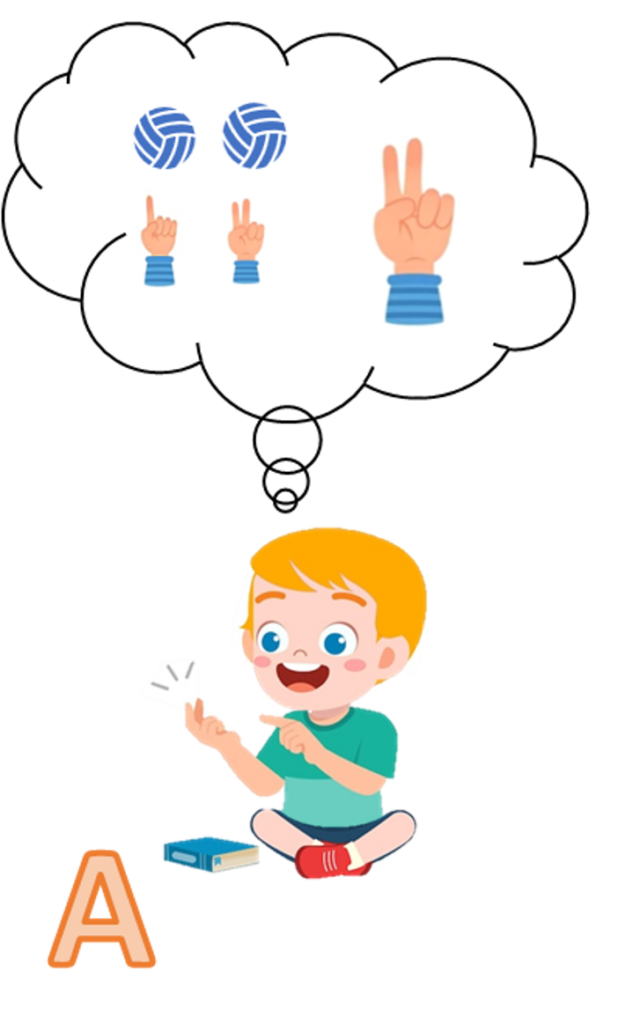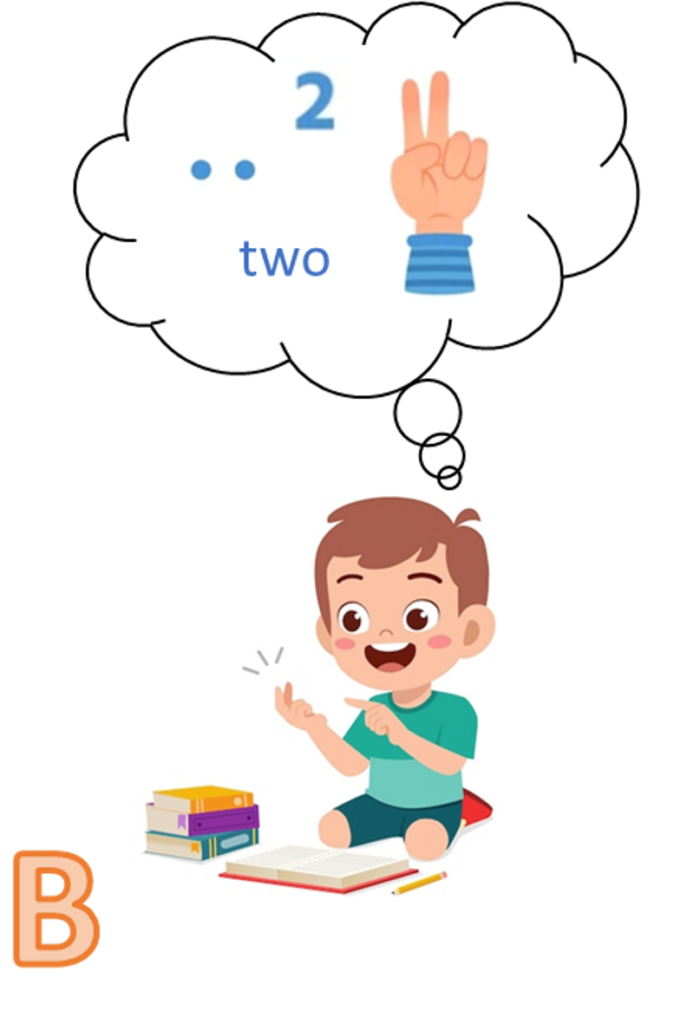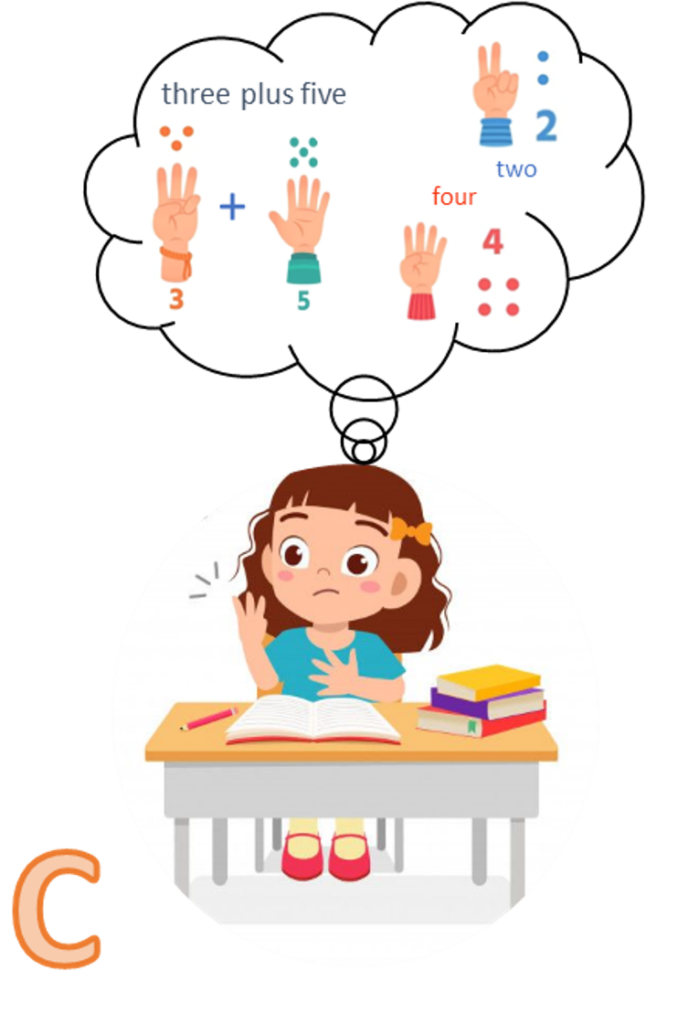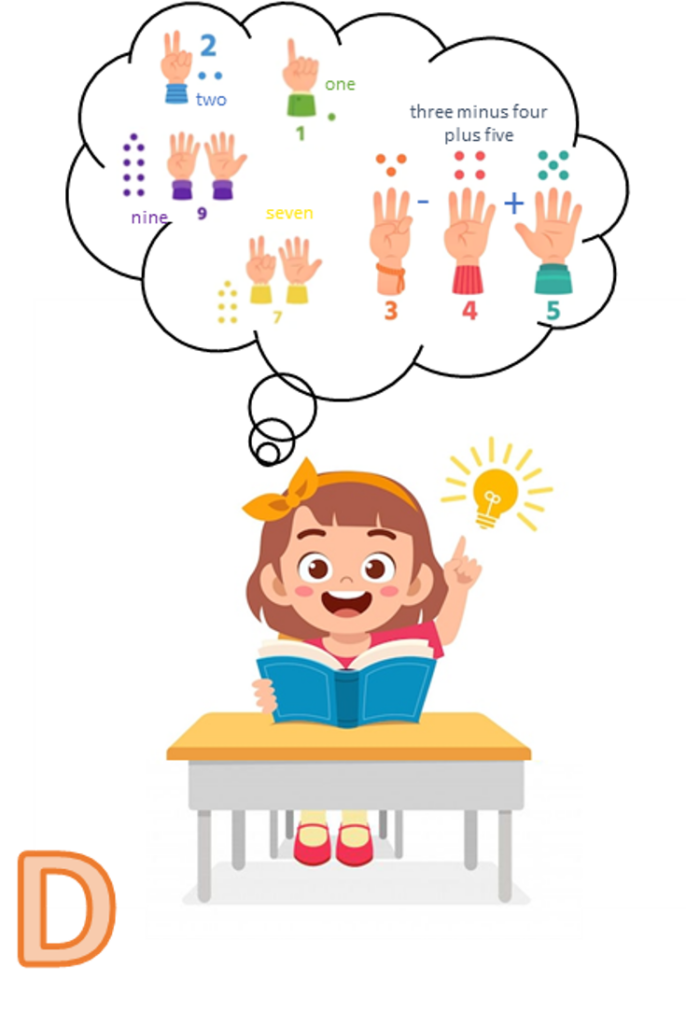Embodied Mathematics: How Physical Experience Shapes Learning
Written by Dr Venera Gashaj, Prof Korbinian Moeller and Dr Dragan Trninic. Venera is a postdoctoral researcher in the Centre for Early Mathematics Learning at Loughborough University. Venera has a Ph.D. in Developmental Psychology and investigates how physical movements contribute to understanding mathematical concepts. Korbinian is a Professor of Mathematical Cognition exploring mathematics skill development through hands-on experiences. Dragan has a Ph.D. in Science and Mathematics Education and examines how physical and social environments influence STEM learning. Edited by Dr Beth Woollacott.
Introduction
Have you ever wondered how humans think? It’s intriguing that while our capacity for thought appears boundless, some scientists argue that it’s deeply rooted in our physical bodily experiences. This is the essence of embodied cognition which aims to describe the close relationship between our minds and bodies. In this blog post, we delve into what embodied cognition means and explore how understanding it may significantly transform our approach to learning.
Does our body influence how we think and learn?
Consider how often we use physical metaphors to describe our (emotional) states or concepts. We say we feel “down”, or that we need to “lend a hand”. This reflects our natural inclination to associate abstract ideas with tangible bodily experiences like temperature, spatial orientation, or specific body parts. But why do we have the tendency to use such physical metaphors?
The idea of embodied cognition emphasizes how bodily experiences shape our thinking and our mind. Unlike viewing the mind as software working on abstract codes for reasoning, embodied cognition suggests that interactions with the physical world shape our thinking and learning. Essentially, our thoughts are influenced by our physical interactions and experiences in our environment, not solely confined to abstract mental processes.
“…embodied cognition suggests that interactions with the physical world shape our thinking and learning“
Consider encountering something new, like learning a sport or board game. Your mind records more than just the rules, it captures all sensations: sights, sounds, smells, movements, and body involvement. Later, when faced with a similar situation, your brain will unconsciously replay parts of this recording to better deal with the new scenario. Psychologist Lawrence Barsalou1 calls this the simulation view of cognition, where we simulate or replay specific bodily experiences mostly without realizing it. For example, thinking about using a hammer was found to activate brain regions which were also active when physically using one.
This illustrates how we use perceptual, motor, and internal sensations to interact with and make sense of the outside world. This association is clear with tangible objects like a hammer but more complex with abstract ideas like mathematics, which lack direct sensory experiences.
How do we grasp abstract notions?
Embodied cognition addresses a key challenge in cognitive sciences (how to associate abstract ideas with concrete examples) by emphasizing the importance of associating abstract ideas with past experiences2. For an example from education, consider the abstract concepts within mathematics. In mathematics, it has repeatedly been observed that children typically use their fingers when counting and performing initial calculations; something which seems to establish an intuitive association that enhances mathematical understanding. This embodied approach associates mathematical ideas with bodily experiences, making mathematics more accessible and easy to grasp than mere memorization approaches. Interestingly, this is in line with evidence from neuroscience indicating that the same brain regions are active when moving our fingers as when just thinking about numbers3. As such, there seems to be a direct link between our bodies and basic mathematical concepts such as numbers.
The pictures below illustrate how the body contributes to learning mathematics, specifically foundational skills including counting, understanding magnitude (or size), and performing basic arithmetic.
In Panel A, the use of fingers is highlighted as a valuable tool for counting, with each extended finger representing one counted item, and the consistent order in which fingers are extended reflecting the fixed sequence of number words for counting. This systematic use of fingers creates specific patterns that correspond to particular numbers (e.g., index and middle fingers represent two objects counted).

Consequently, these finger patterns also signify the quantity of the counted set, providing a unique association between specific finger configurations and numerical magnitudes, as shown in Panel B.

Panel C exemplifies how fingers play a crucial role in learning basic arithmetic by facilitating the composition and decomposition of numbers. For example, extending five fingers to three already extended fingers gives eight extended fingers, and therefore, the number eight is represented through the composition of five and three (fingers). Through consistent finger use in counting, magnitude montring (showing numbers with fingers), and basic calculations, the brain establishes systematic associations between numbers and fingers/finger patterns4.

Over time, this process facilitates the development of a specialized mental representation of numbers by finger-based codes, similar to dot patterns, numerical digits, and verbal number words5. Ultimately, we become proficient in utilizing these finger-based representations, enabling the mental manipulation of finger-based numerical concepts without actual physical finger movement. The diagram illustrates the progression from physically counting on fingers (in Panels A-C) to mentally simulating finger-counting whenever numbers are contemplated (Panel D).

Can such embodied representations also facilitate advanced mathematics?
Traditional math classes typically involve students sitting quietly, but Dr. Tao, a Fields Medal recipient (comparable to the Noble Prize) and mathematician at UCLA, described how he approached a complex problem by lying on the floor and rolling around. He was trying to conceptualize a mathematical description involving waves rotating on top of each other. By physically embodying the concept and simulating the motion of waves, he found that this helped him develop a clearer intuition. Moving his body in a way that mirrored the mathematical problem enabled him to “see” the problem from a new perspective. Of course, this does not mean every student should start rolling on the floor to understand mathematics. However, while this approach may not suit every student, it highlights how bodily actions can aid in understanding mathematics problems – even complex ones.
“Moving his body in a way that mirrored the mathematical problem enabled him to “see” the problem from a new perspective“
Moreover, this example challenges the conventional notion that effective learning in mathematics requires strict adherence to quiet, seated classroom behavior. Mathematicians often engage in dynamic behaviours such as walking around, changing positions, and gesturing while grappling with mathematical ideas. This embodied perspective underscores the effectiveness of hands-on activities and experiential learning in education. Students can deepen their understanding and develop a more intuitive grasp of mathematical principles by physically engaging with them.
References
- L. W. Barsalou, “Grounded cognition.,” Annual Review of Psychology, vol. 59, pp. 617-645, 2008.
- M. H. Fischer, A. M. Glenberg, K. Moeller and S. Shaki, “Grounding (fairly) complex numerical knowledge: an educational example.”, Psychological Research, pp. 1-9, 2021.
- M. Penner-Wilger and M. L. Anderson, “An alternative view of the relation between finger gnosis and math ability: Redeployment of finger representations for the representation of number.”, 2008.
- R. Barrocas, S. Roesch, C. Gawrilow and K. Moeller, “Putting a finger on numerical development–reviewing the contributions of kindergarten finger gnosis and fine motor skills to numerical abilities.”, Frontiers in Psychology, no. 11, p. 1012, 2020.
- Moeller, K., Fischer, U., Link, T., Wasner, M., Huber, S., Cress, U., & Nuerk, H. C. “Learning and development of embodied numerosity ”. Cognitive processing, 13, 271-274, 2012.
Centre for Mathematical Cognition
We write mostly about mathematics education, numerical cognition and general academic life. Our centre’s research is wide-ranging, so there is something for everyone: teachers, researchers and general interest. This blog is managed by Joanne Eaves and Chris Shore, researchers at the CMC, who edits and typesets all posts. Please email j.eaves@lboro.ac.uk if you have any feedback or if you would like information about being a guest contributor. We hope you enjoy our blog!